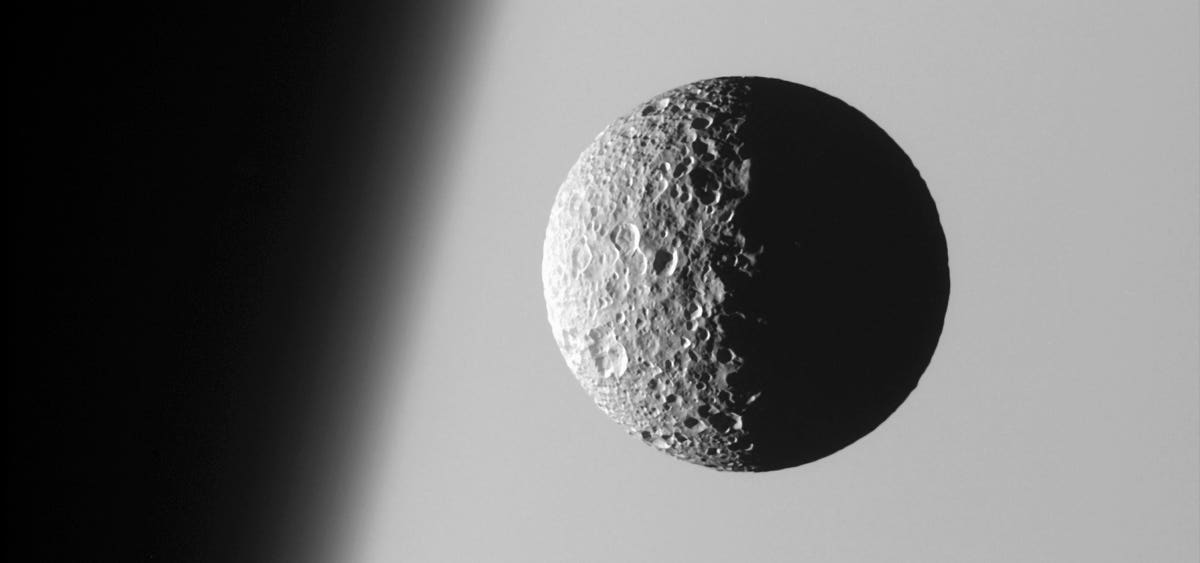Mysterious Oceans: Unveiling the Secrets of Mimas
Saturn’s diminutive moon, Mimas, has been confirmed to contain a subterranean ocean, marking a significant milestone in the search for extraterrestrial life. This finding is particularly intriguing because traditionally, only celestial bodies showing signs of geological activity were thought to host oceans. Despite being Saturn’s smallest major moon with a heavily cratered appearance that suggested stagnation, Mimas has now revealed its dynamic nature.
Geological Surprises on a Small Moon
Mimas, often likened to the Death Star from Star Wars due to its large Herschel crater, shows more than just a striking resemblance to cinematic lore. Recent data points to geological activity at its southern pole, where craters are noticeably smaller and fresher, suggesting episodes of melting and possibly resurfacing. These observations challenge the previously held view of Mimas as a geologically dormant world.
A Young Ocean Stirring Life’s Possibilities
The global ocean beneath Mimas’ icy crust, estimated to be 20-30 km thick and about 25 million years old, places it among a special group of moons like Enceladus and Europa, which also harbor internal oceans. This discovery, driven by analysis of Mimas’ tidal interactions with Saturn and vital data from NASA’s Cassini mission, underscores the potential for life. These hidden waters not only hint at the existence of more such oceans across our solar system but also suggest that even small, quiet moons could be harboring conditions favorable for life.
This new understanding broadens our perspective of the solar system’s icy moons, urging a deeper exploration into their composition and the potential they hold for hosting life forms. As we continue to explore these celestial bodies, the possibilities for breakthroughs in understanding the origins and prevalence of life beyond Earth grow exponentially.
